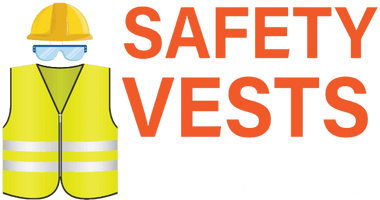
Workplace Health and Safety Tips: PPE & Hazard Prevention
Workplace hazards can affect workers' health, safety, or well-being. Identifying these hazards is critical for injury prevention and regulatory compliance. PPE plays an essential role in protecting workers from workplace hazards. Each type of equipment addresses a specific risk:
1. Head Protection

Injuries caused by falling or flying objects can be prevented by hard hats in construction, warehousing, or industrial settings. They are essential for reducing traumatic brain injuries.
2. Eye and Face Protection

Safety goggles guard the eyes from chemical splashes, particles, or radiation. Face shields provide full-face coverage during grinding, welding, or working with corrosive materials.
3. Hearing Protection

Prolonged exposure to high noise levels may lead to permanent hearing damage. To reduce sound exposure, earplugs and earmuffs are best suited for hearing protection, especially around heavy machinery or power tools.
4. Hand Protection

Gloves are utilized based on task-specific risks. Chemical resistant gloves guard against burns and corrosive substances; on the other hand, cut resistant gloves protect against sharp tools.
5. Body Protection

Coveralls, flame resistant clothing, and high visibility safety vests are used to protect against sparks, chemicals, and visibility hazards. Reflective materials ensure that workers are seen in low-light or high-traffic areas.
6. Foot Protection

Safety shoes with steel or composite toes protect against crushing injuries. Slip resistant soles lower fall risks, and some boots provide electrical hazard protection.
Types of Hazards
Below is the breakdown of the most common types of hazards:
Physical Hazards
These are among the most frequent workplace risks and can occur in nearly every environment:
-
Slips, Trips, and Falls: Wet floors, uneven surfaces, loose cables, or clutter might be the reason for these hazards. They often result in sprains, fractures, or head injuries and are a leading cause of workplace injuries.
-
Falling Objects: Tools or materials that fall from shelves or scaffolds can cause head and shoulder injuries. These risks are decreased by wearing hard hats and storing materials properly.
-
Noise Exposure: Individuals can face permanent hearing loss due to loud machinery or prolonged noise. Workers might also face fatigue and decreased concentration over time, even with lower noise levels.
Chemical Hazards
Employees in manufacturing, cleaning, or laboratory roles are especially vulnerable to chemical exposure:
-
Exposure to Hazardous Substances: Chemicals might be toxic, corrosive, or flammable. Skin burns, eye damage, or respiratory issues can be caused by direct contact or spills.
-
Inhalation of Toxic Dust or Fumes: Chronic lung diseases can result from breathing in dust, silica, asbestos, or other airborne particles.
Biological Hazards
These hazards are more common in medical, laboratory, and food service environments:
-
Contact with Bacteria, Viruses, or Mold: Exposure might lead to infections, allergic reactions, or respiratory issues. This is an issue in places that have inadequate ventilation.
-
Frequent risk assessments, staff participation, and prompt mitigation techniques are the first steps toward effective prevention.
Recommendations to Prevent Workplace Hazards
Employers must organize proactive safety programs that engage both management and staff to minimize risks. Here are practical recommendations:
1. Conduct Regular Safety Audits
Regular inspections help identify potential dangers before they cause harm. These audits review equipment condition, worker practices, and environmental factors. These audits look at environmental factors, worker practices, and equipment condition. Audit documentation and remedial measures enhance long-term safety.
2. Provide Comprehensive Safety Training
All workers should be trained to recognize hazards, respond to emergencies, and understand safe work procedures. Information is kept current and at the forefront of people's minds through role-specific training and regular refresher courses.
3. Promote a Safety-First Culture
Fostering an environment where safety is prioritized encourages employees to take initiative in reporting unsafe conditions and following safety protocols. Programs for recognition can encourage safe behavior.
4. Maintain Equipment and Machinery
Frequent maintenance ensures that the machinery operates efficiently and safely. By removing risks like exposed wiring or worn-out parts, preventive maintenance lowers the frequency of malfunctions.
How to Choose the Right Safety Gear for Work
It must depend on the work conditions and tasks for choosing the right safety gear.
1. Ensure Proper Fit and Comfort
PPE should fit properly without causing any discomfort. Look for workwear with adjustable straps, multiple size options, and breathable materials.
2. Verify Compliance and Certification
PPE needs to follow safety regulations. Check for labels showing ANSI or OSHA certification. This ensures the equipment has been tested for effectiveness.
3. Provide Training on Proper Usage
It is necessary to use the PPE correctly. Train workers on proper cleaning and storage procedures. Include hands-on training and demonstrations.
4. Regularly Inspect and Replace PPE
PPE should be inspected for wear and tear before using them. Items should be replaced if they have visible damage, compromised fit, or expired certifications. Regular inspections prevent failure during critical use.
Frequently Asked Questions
What are the safety precautions that workers should take on the construction site?
Employees should always wear the appropriate PPE, use tools correctly, attend safety briefings, adhere to site-specific safety procedures, and remain aware of their surroundings.
Is it mandatory to wear safety gear on the construction site?
Wearing safety gear is necessary on construction sites according to OSHA regulations to protect workers from common hazards and prevent injuries.
What kind of hazards does this safety gear protect workers from?
Employees who wear safety gear are protected from risks such as falls, flying debris, electrical shocks, chemical exposure, loud noises, and head, eye, or foot injuries.
